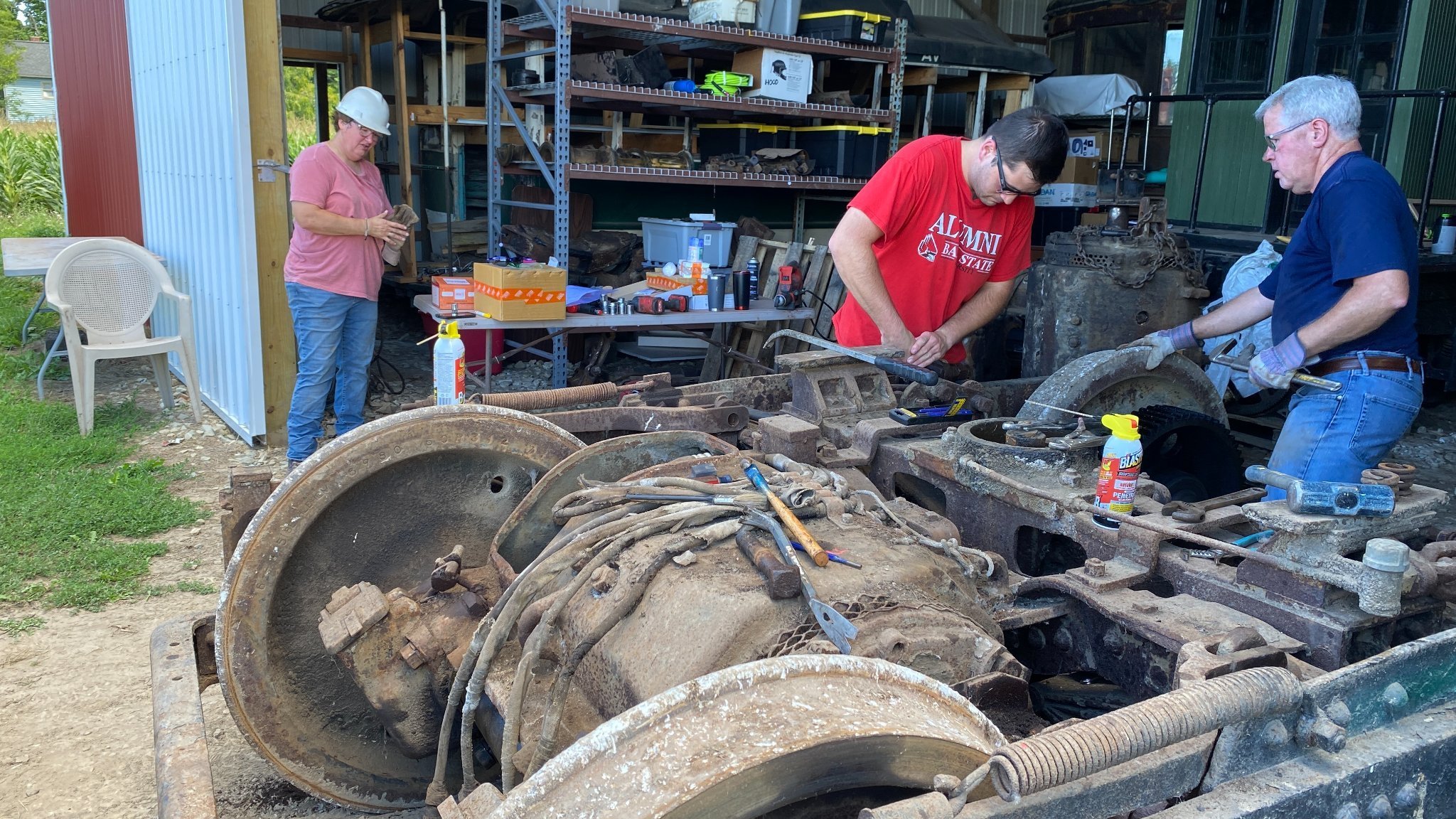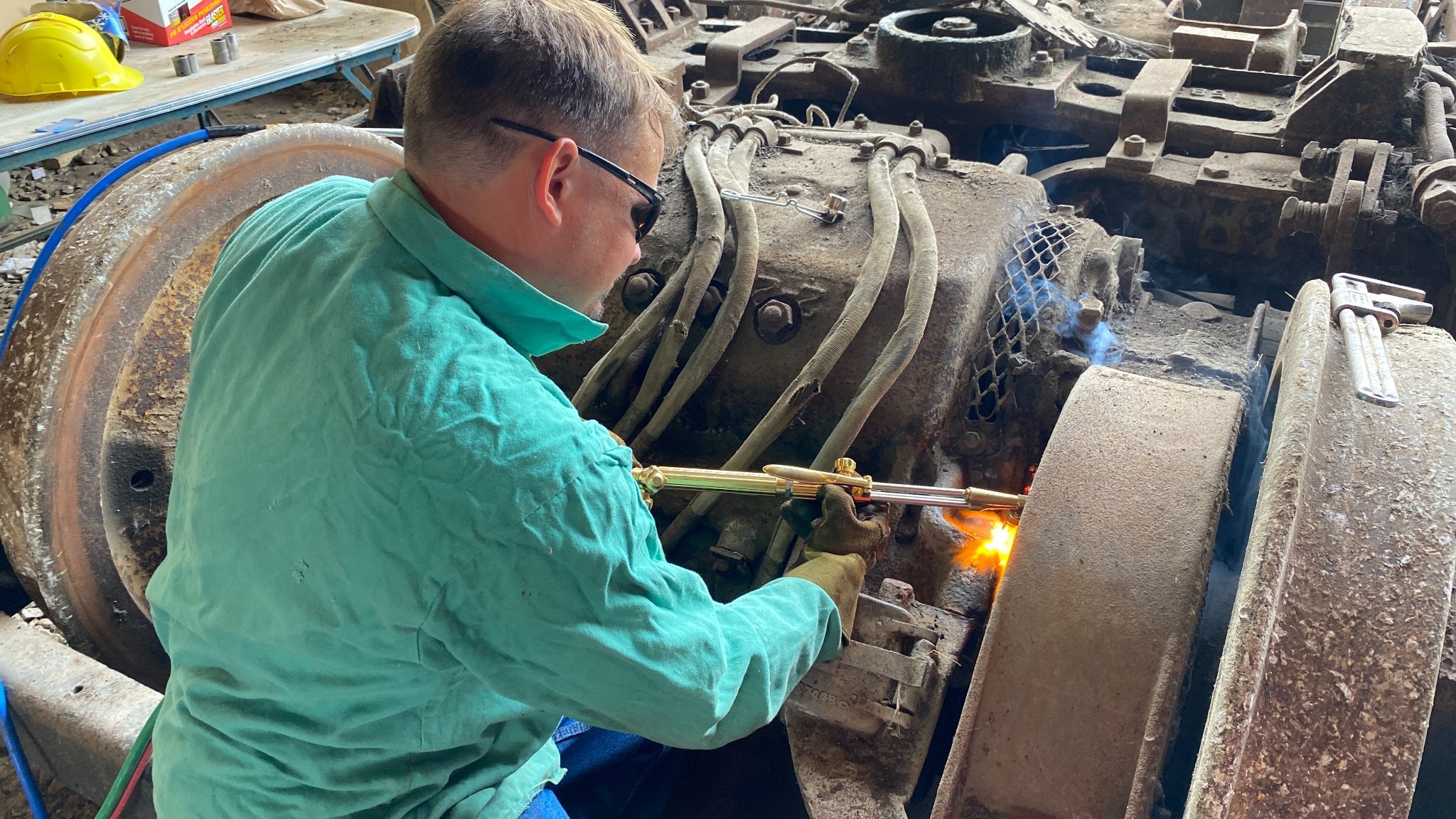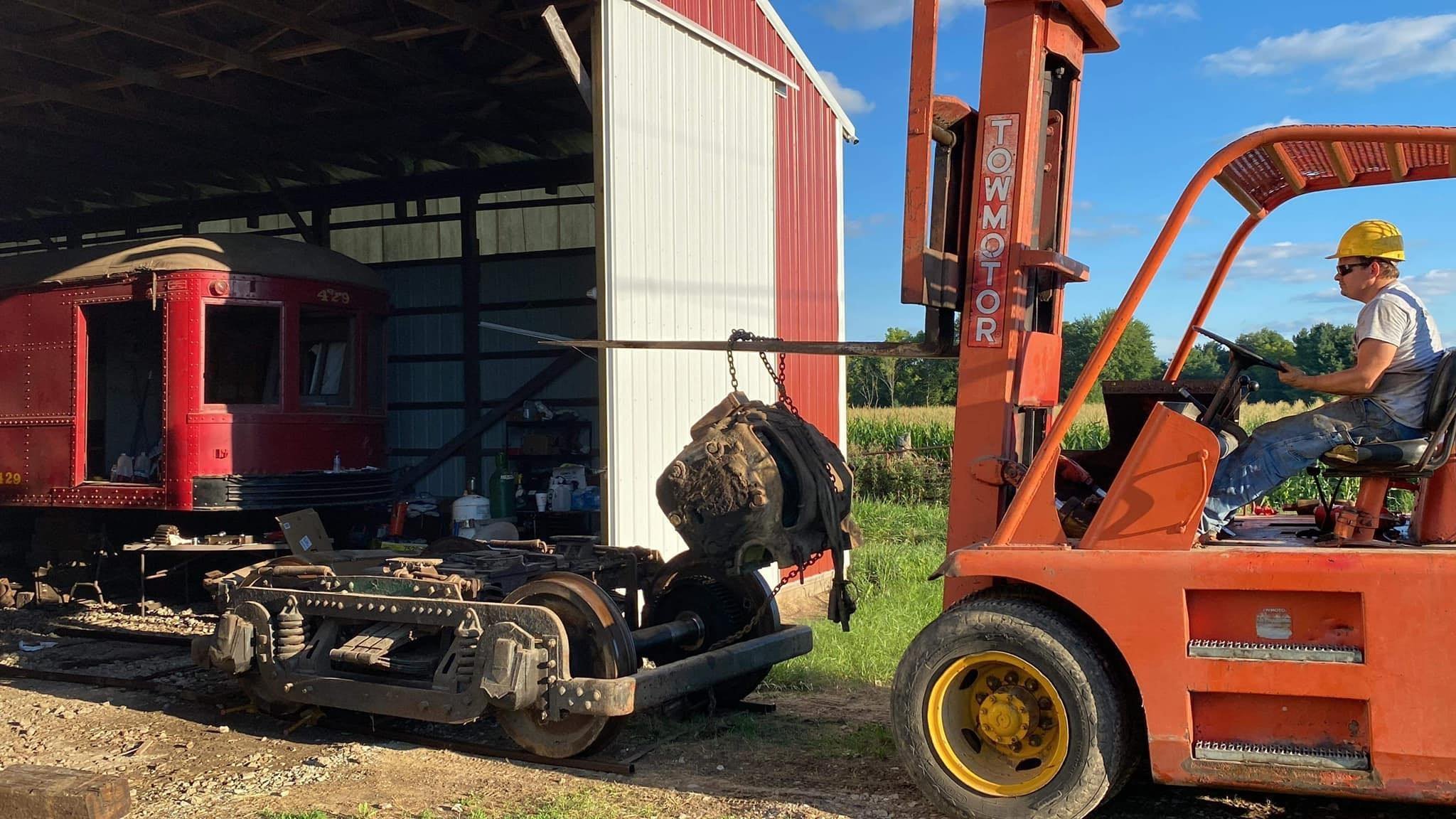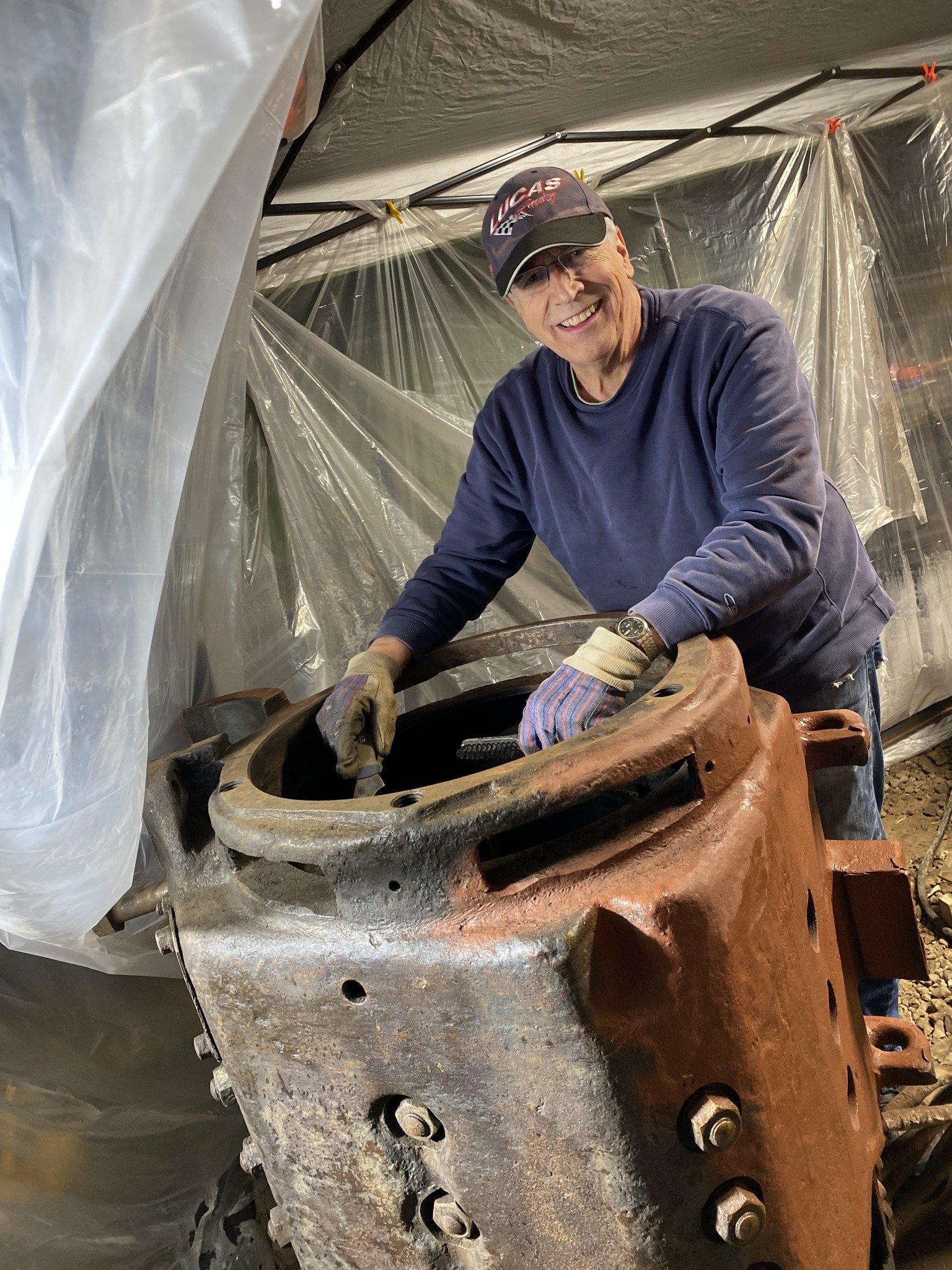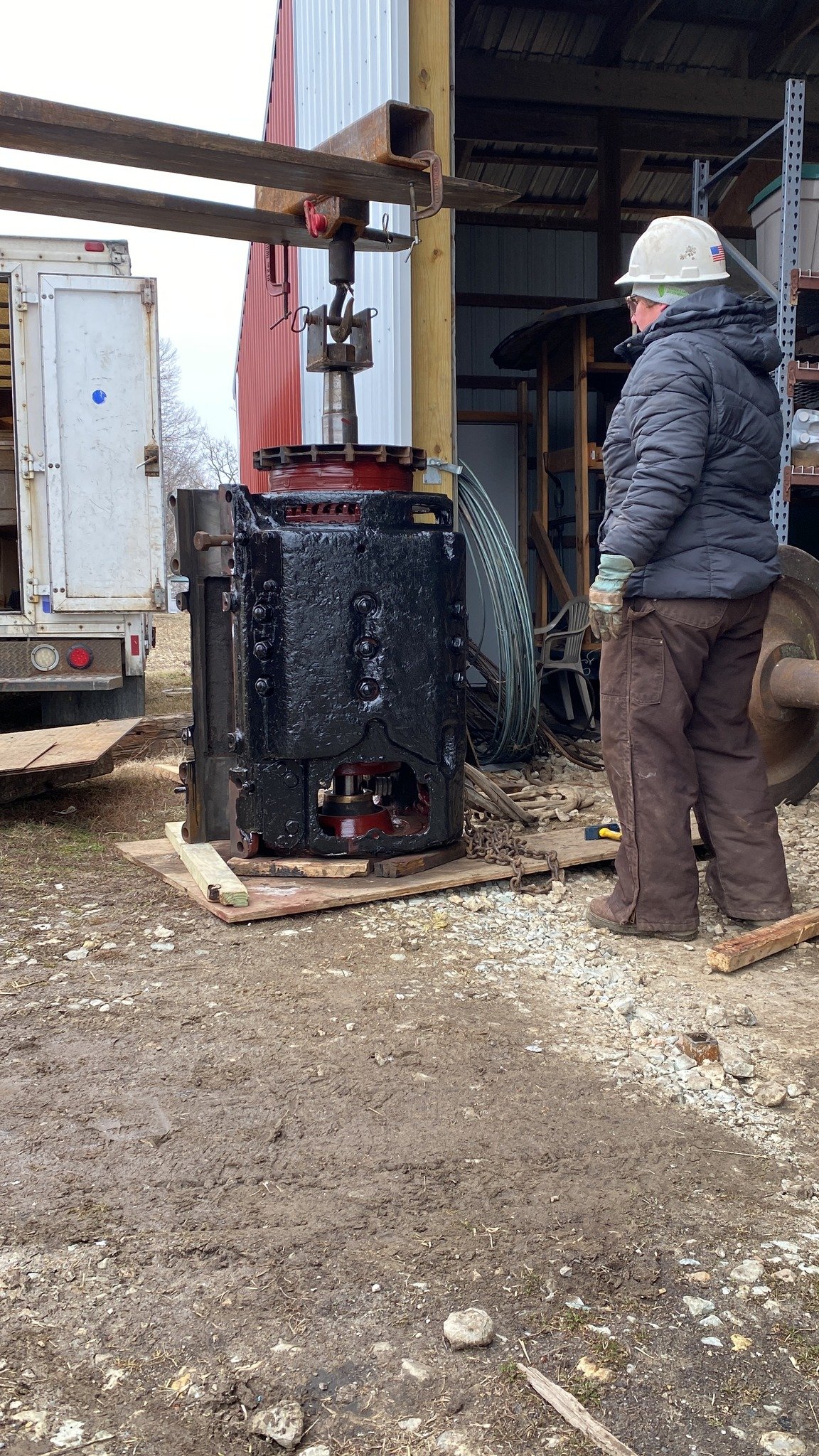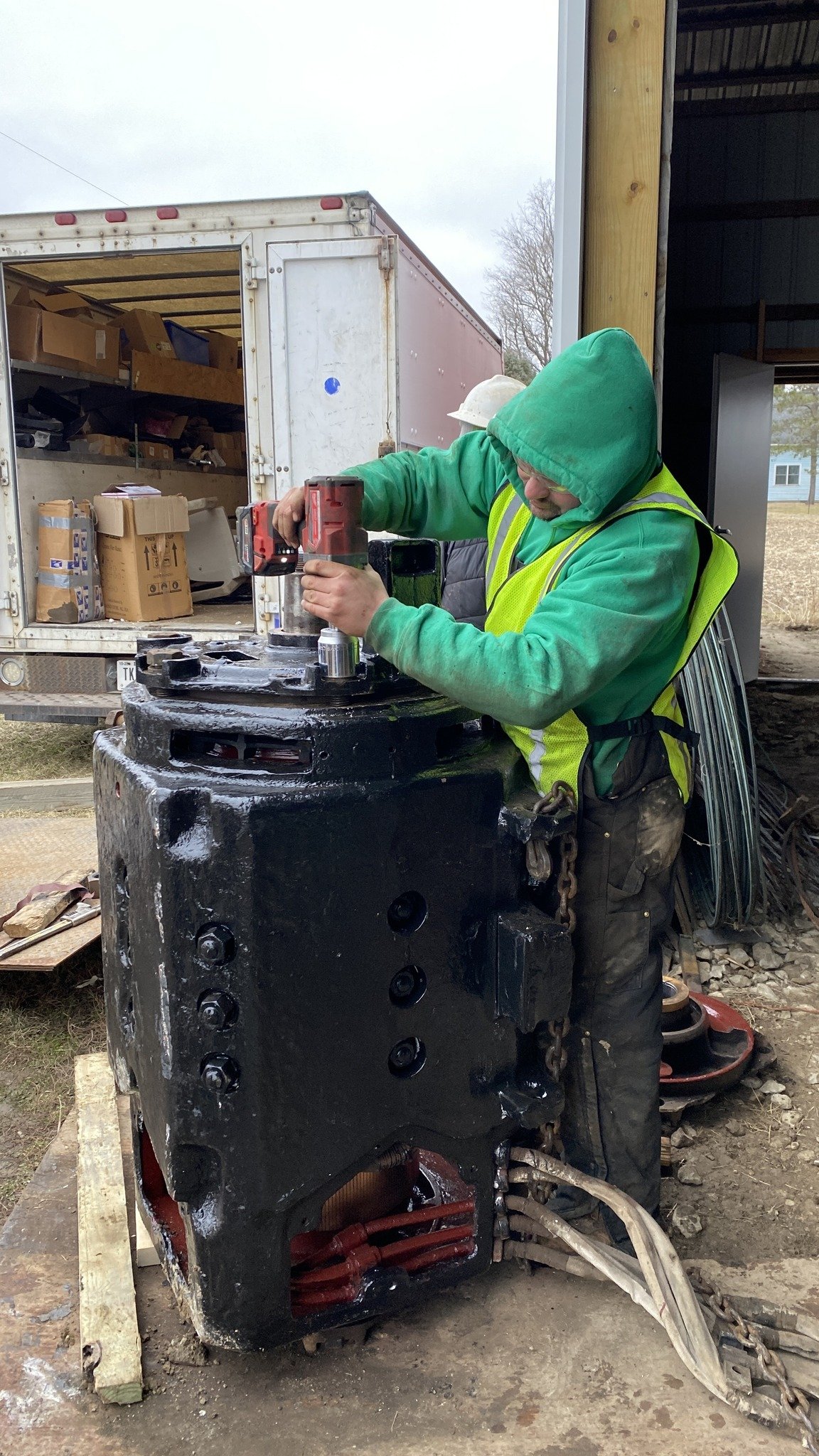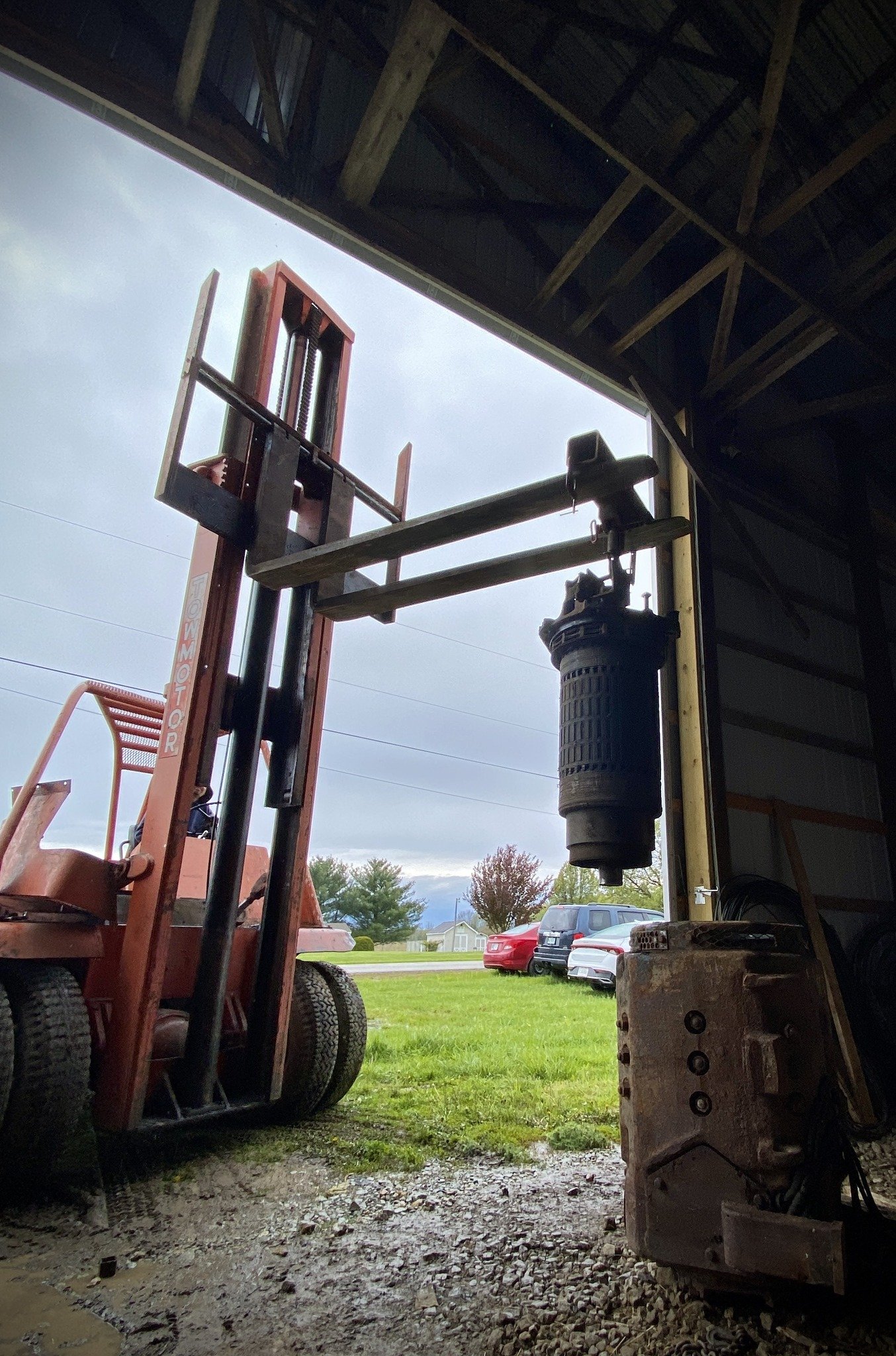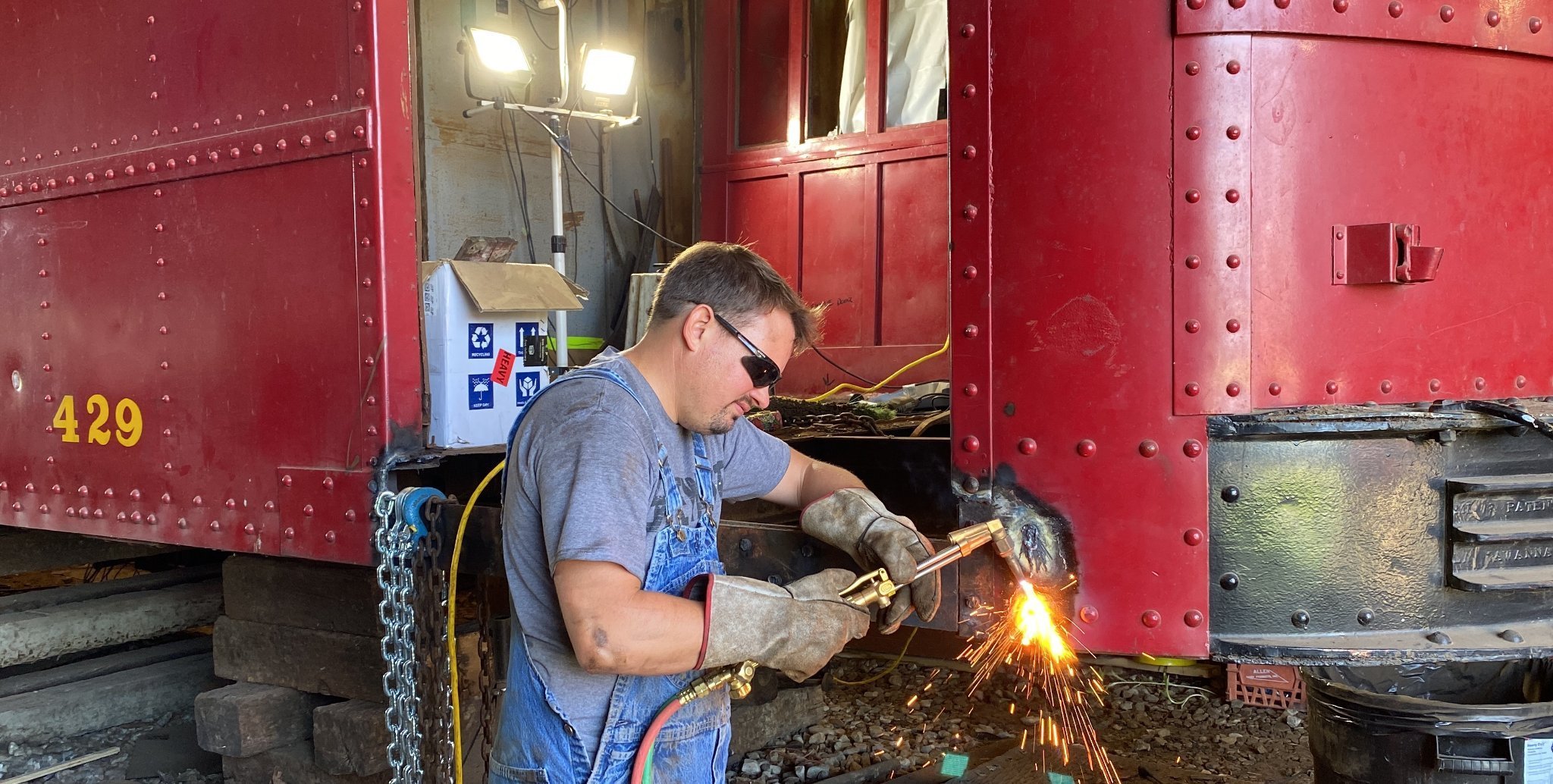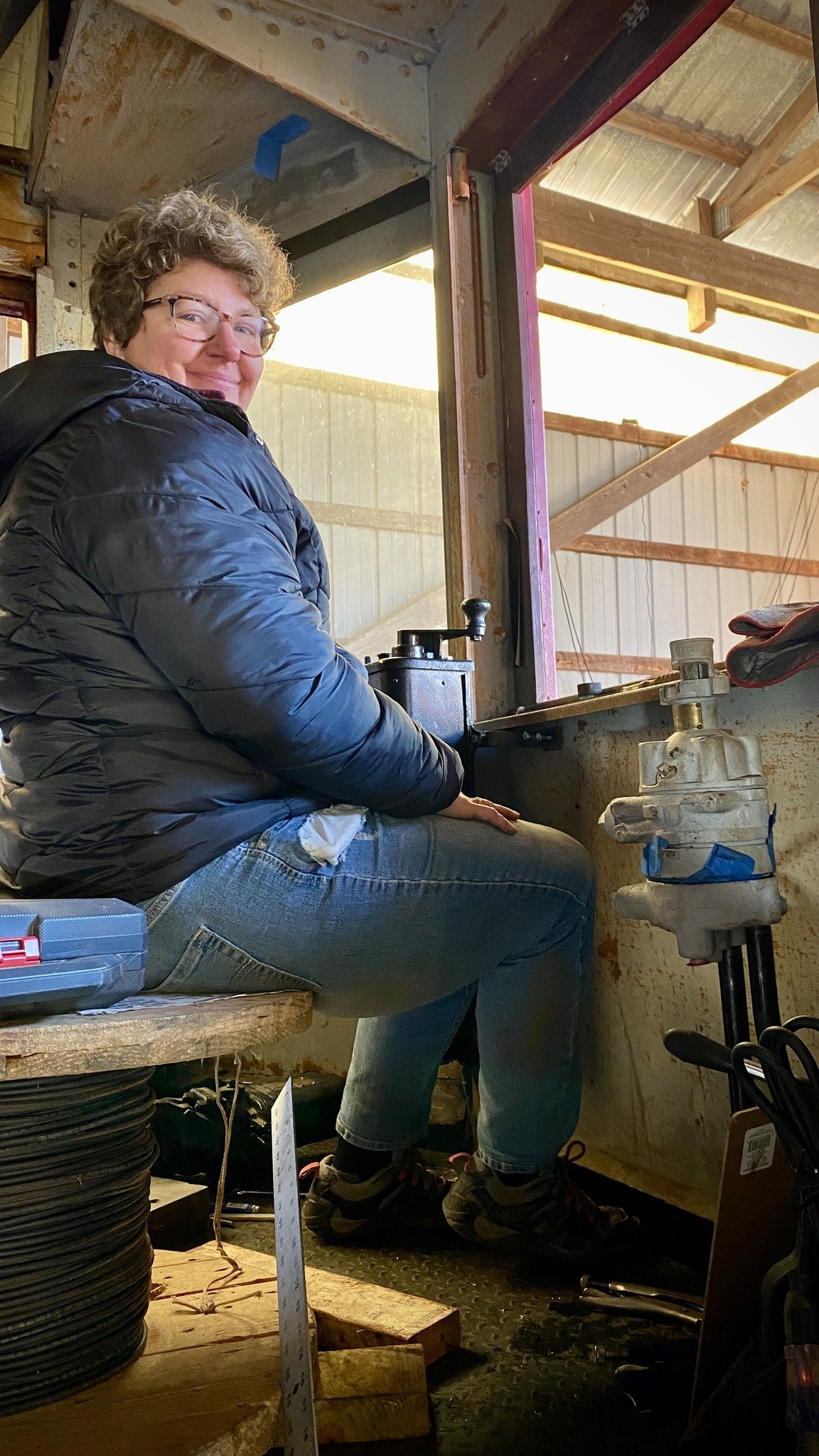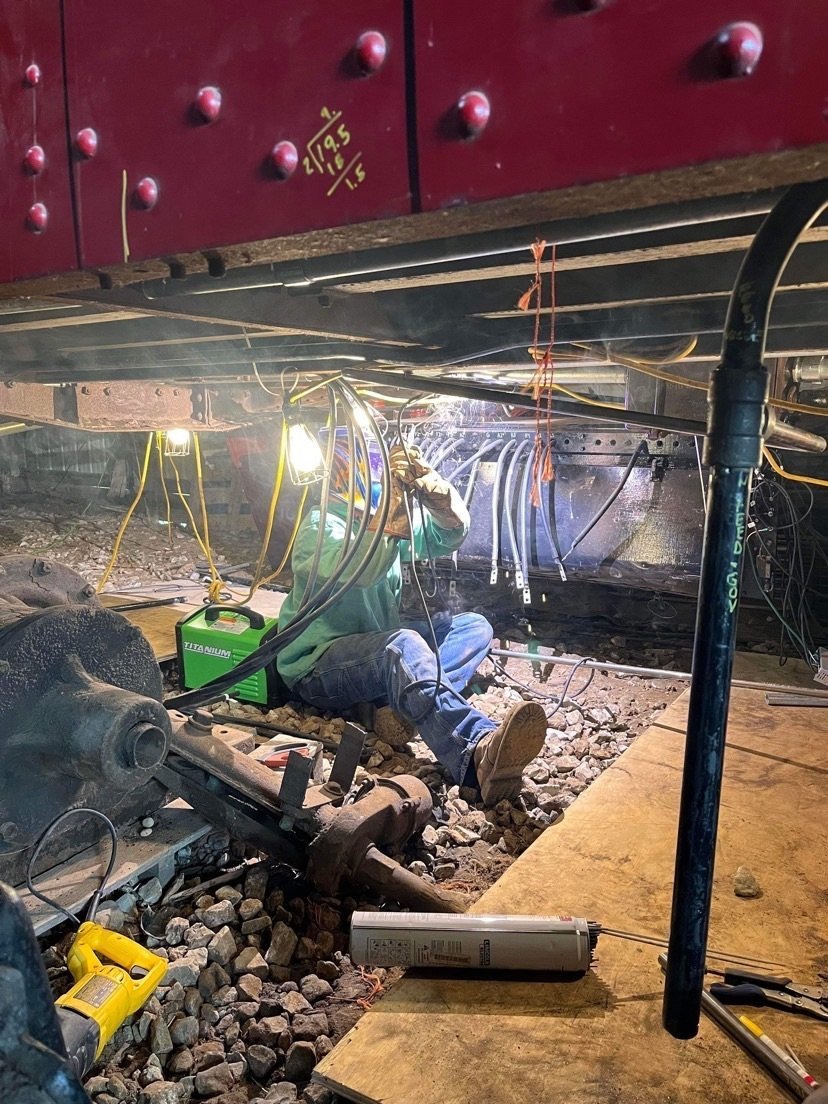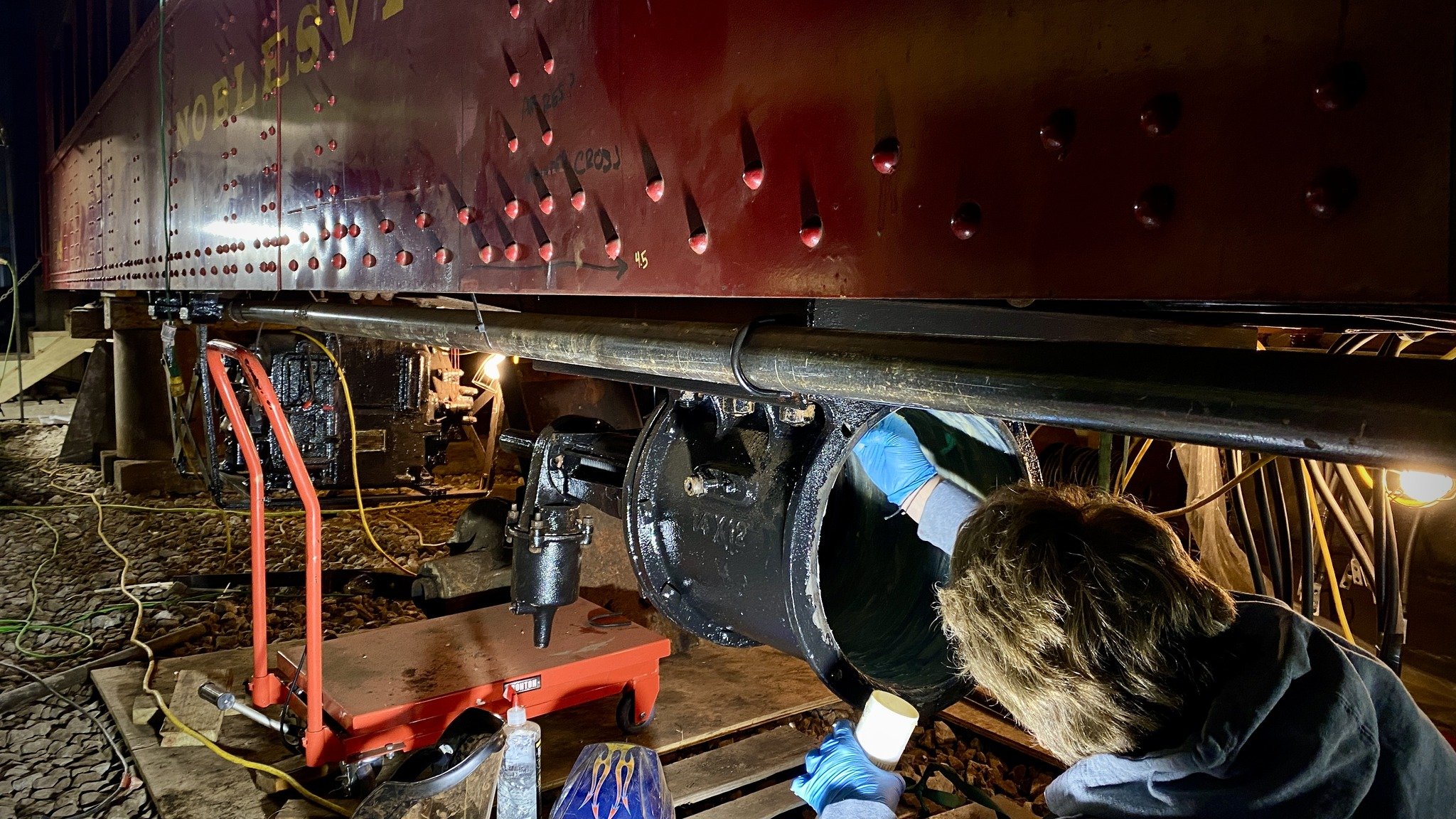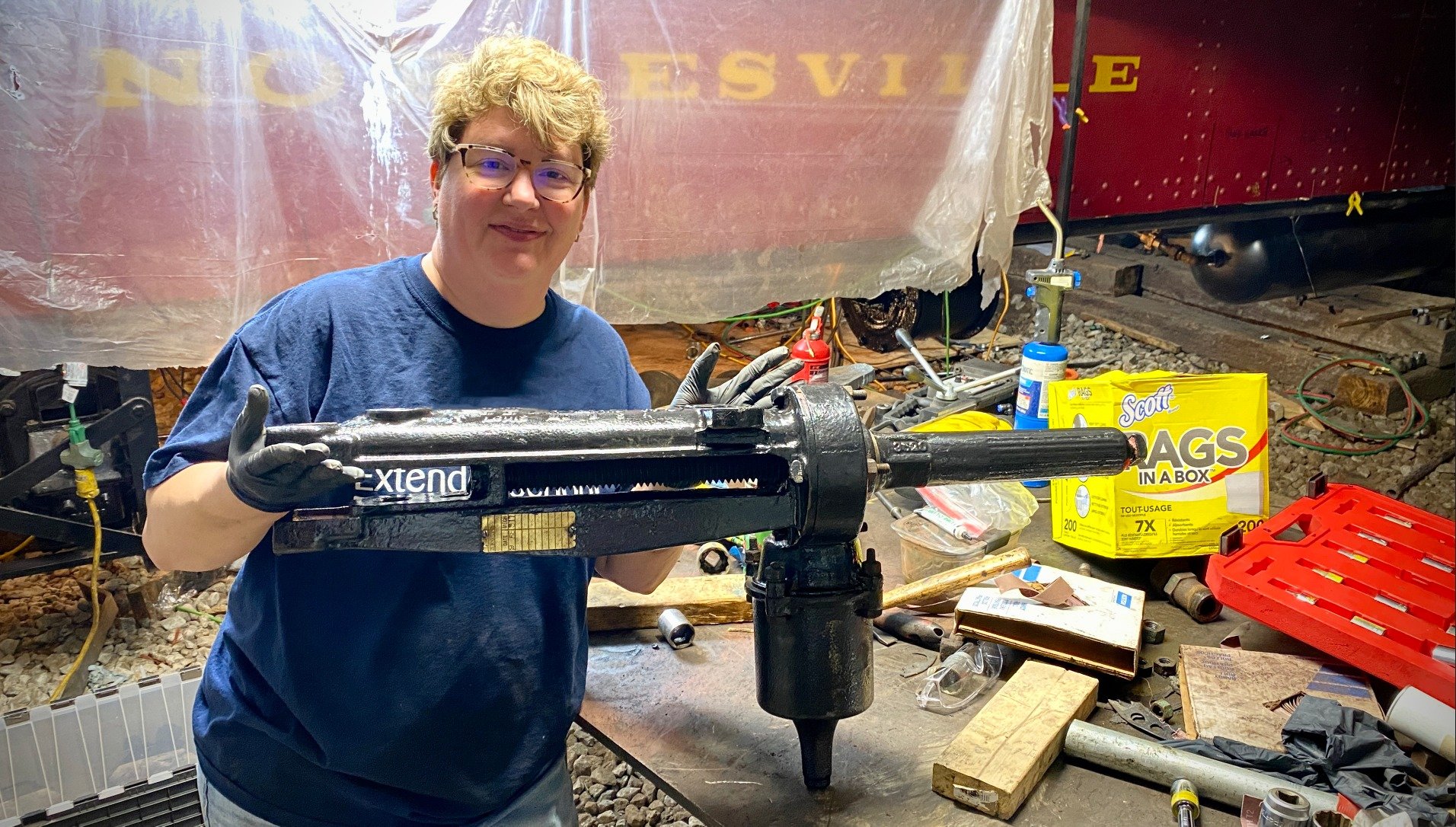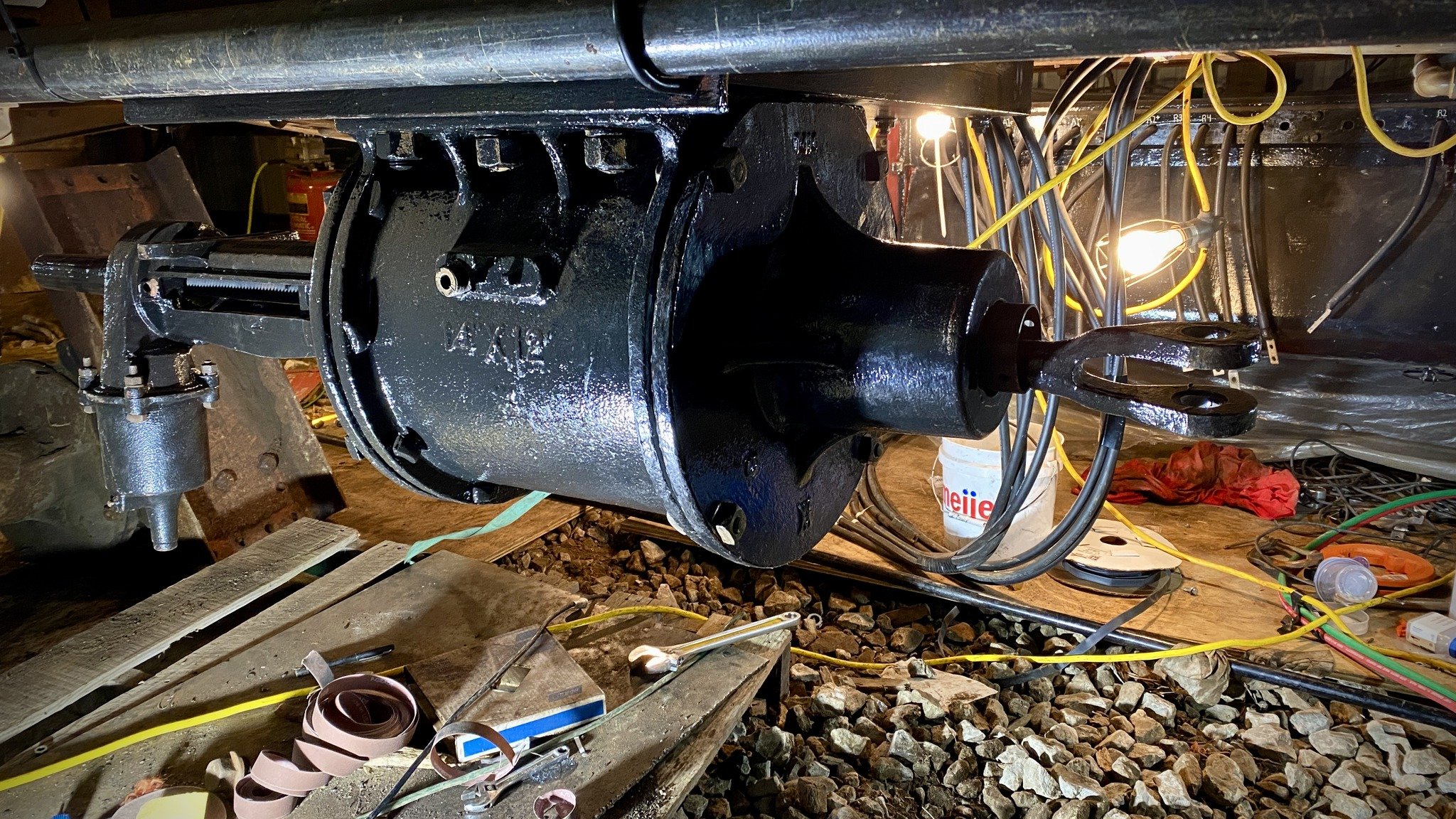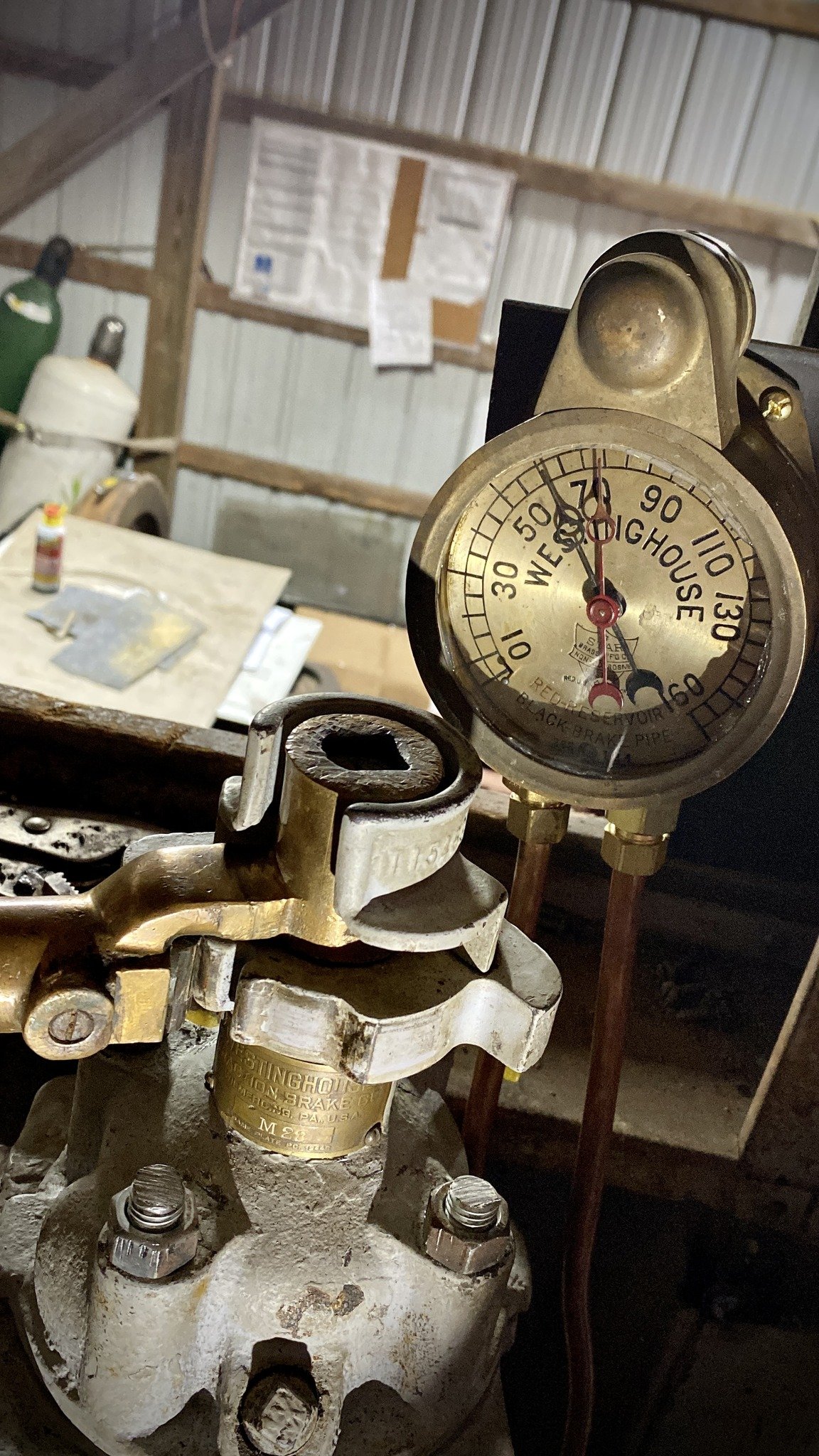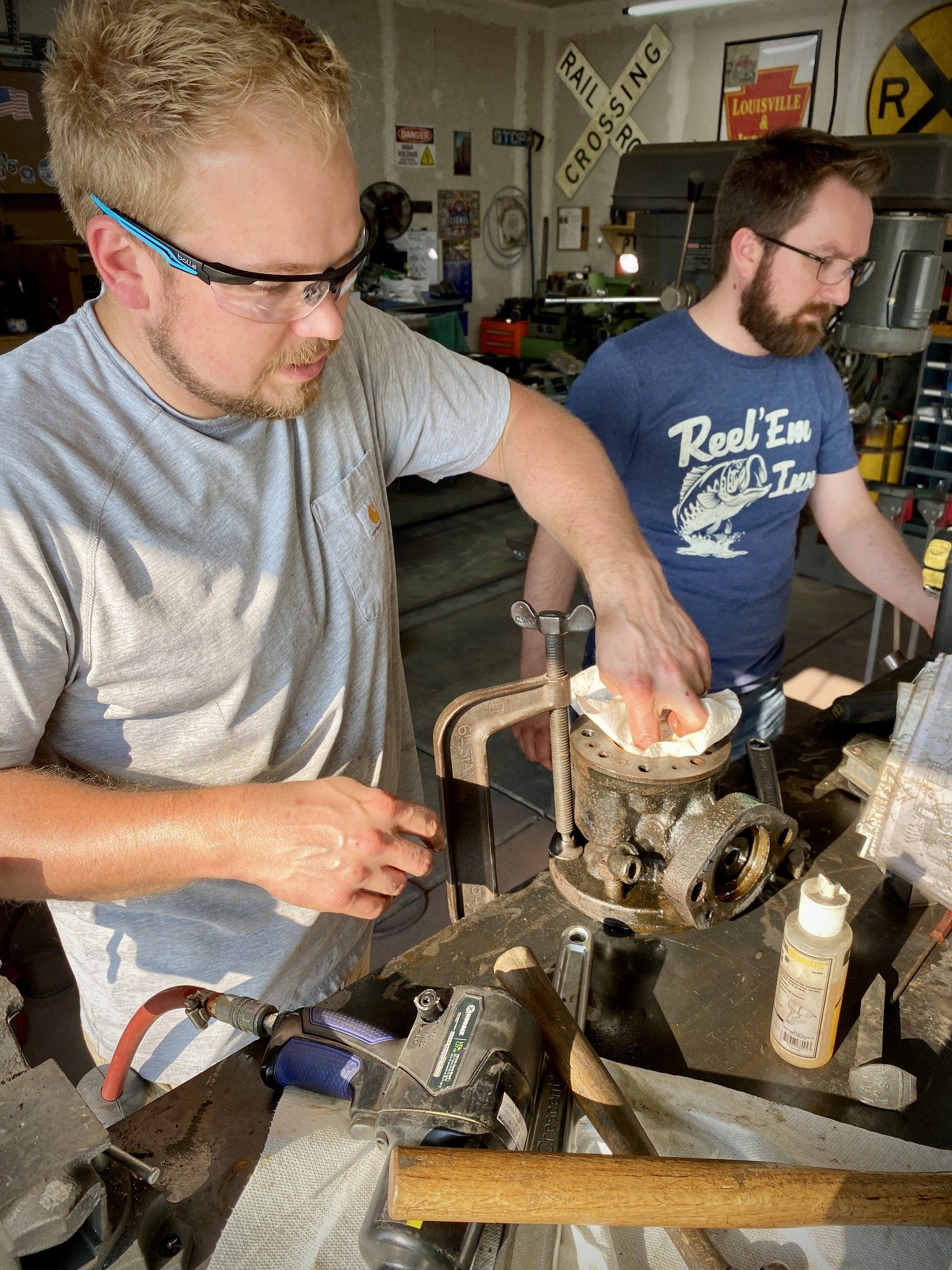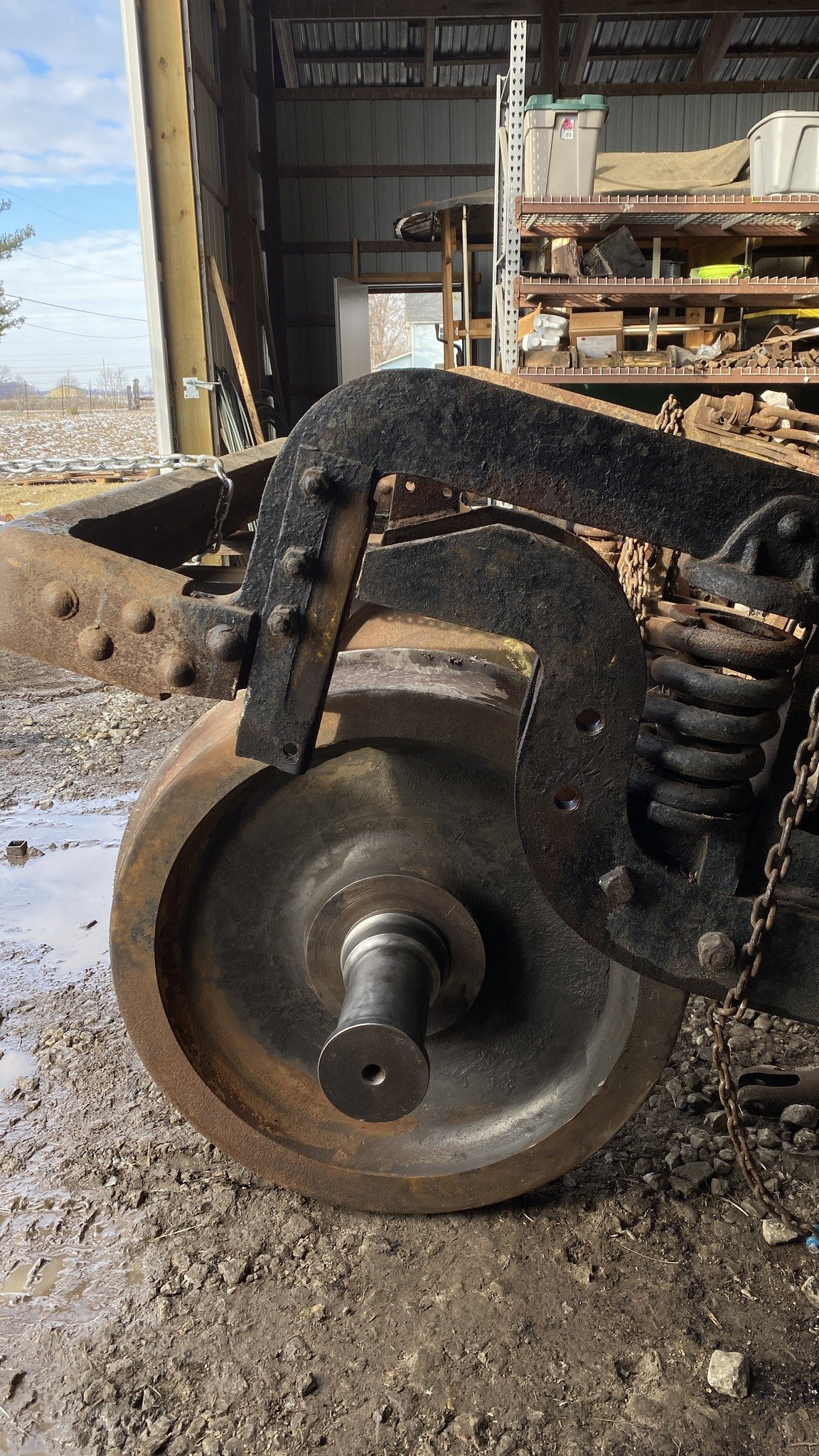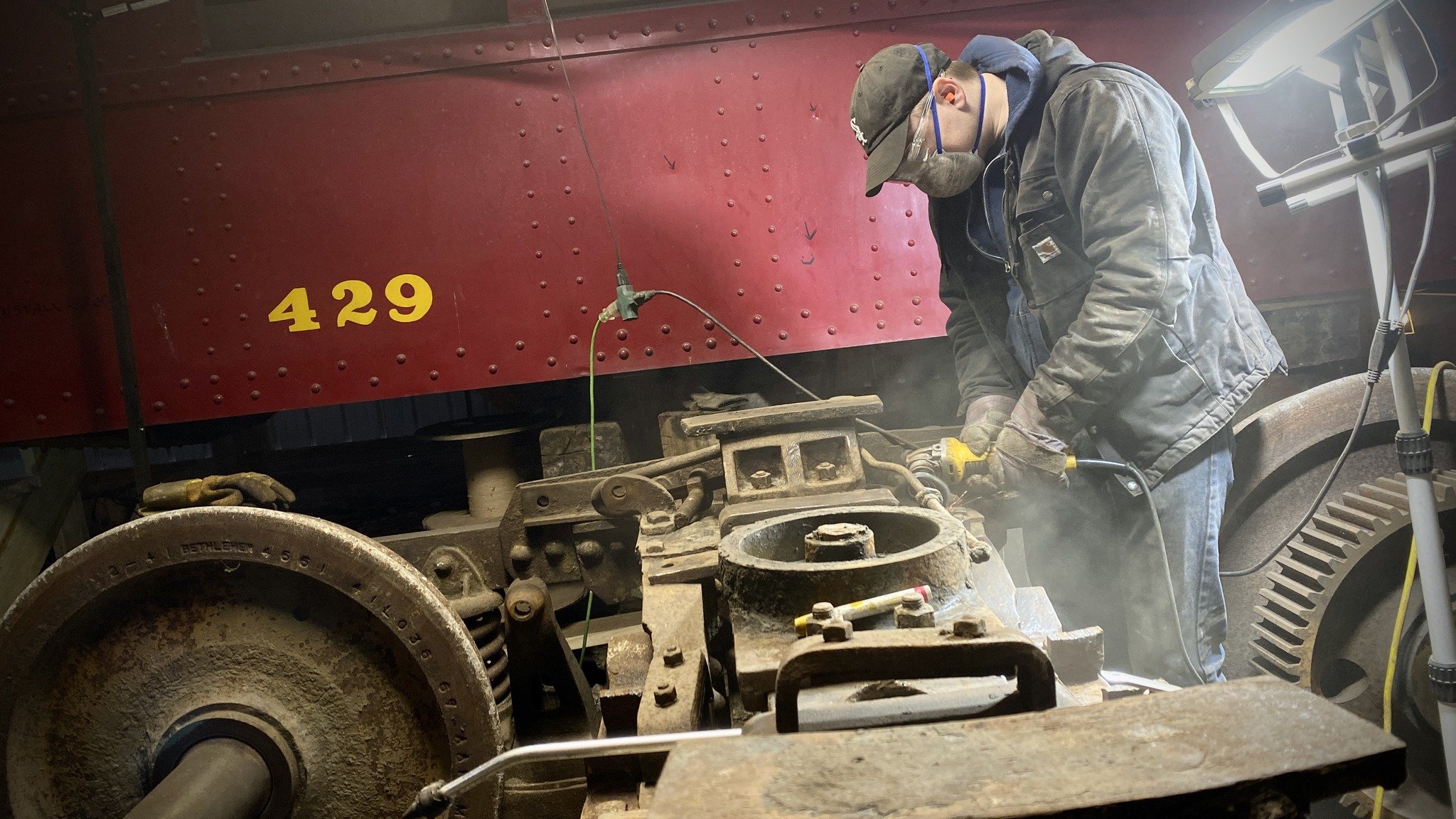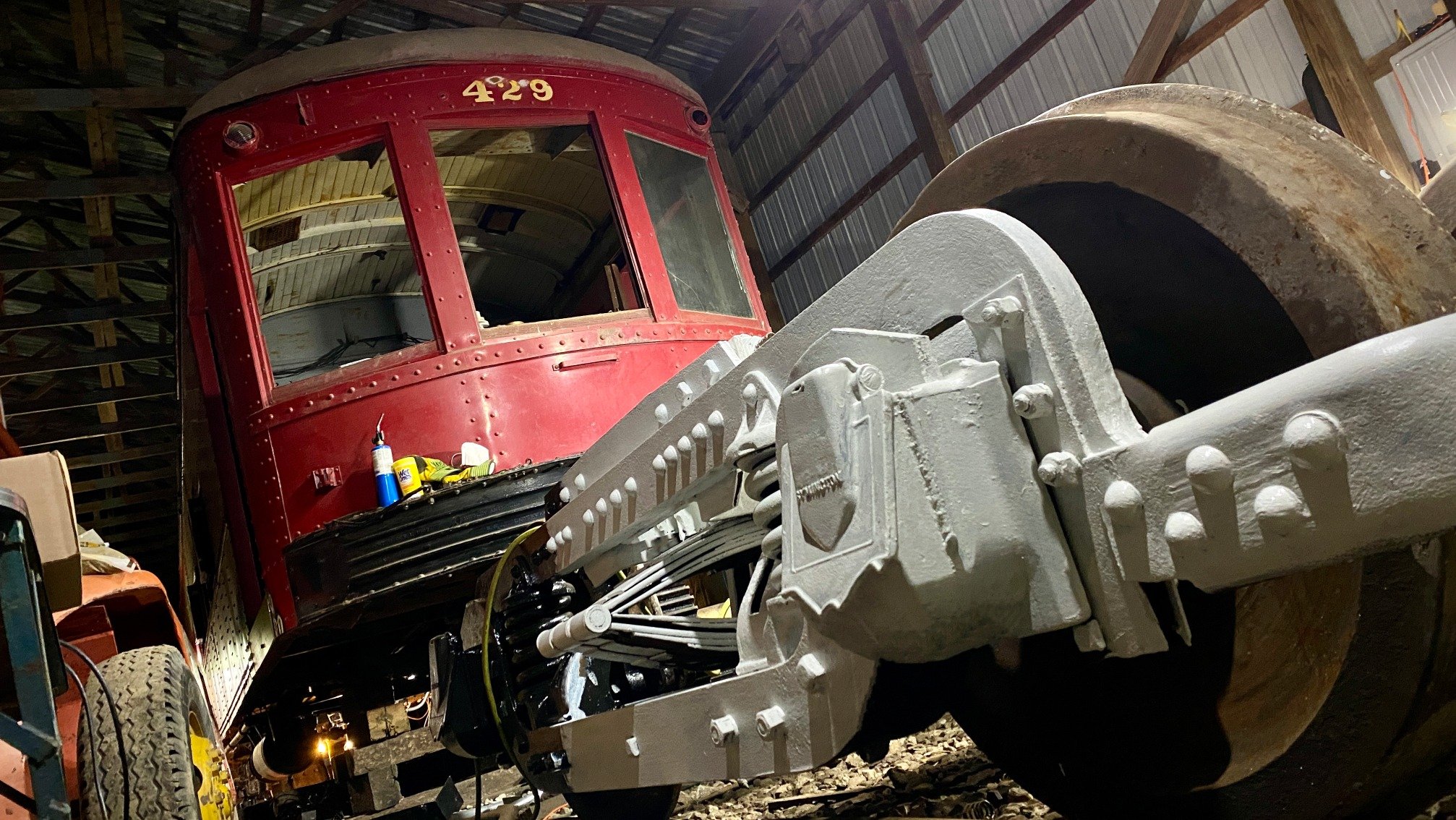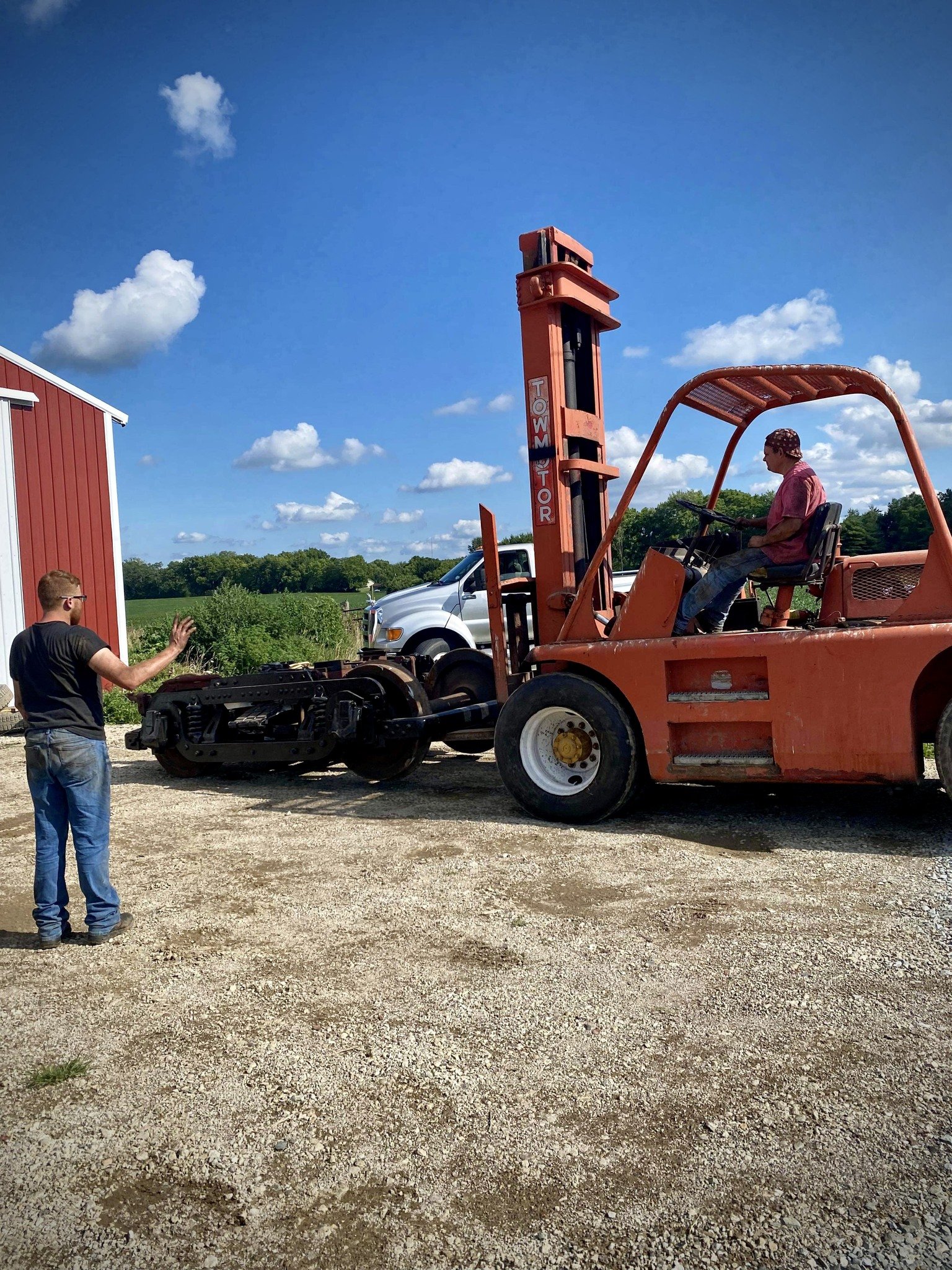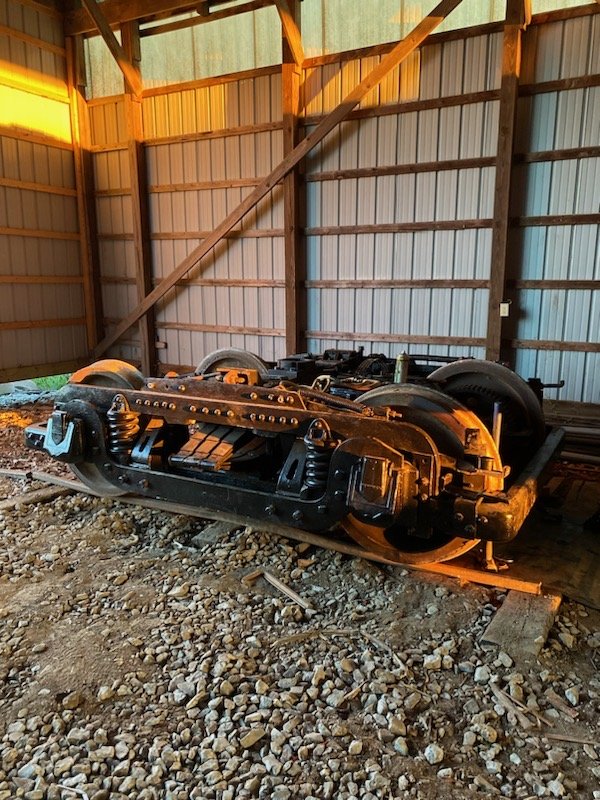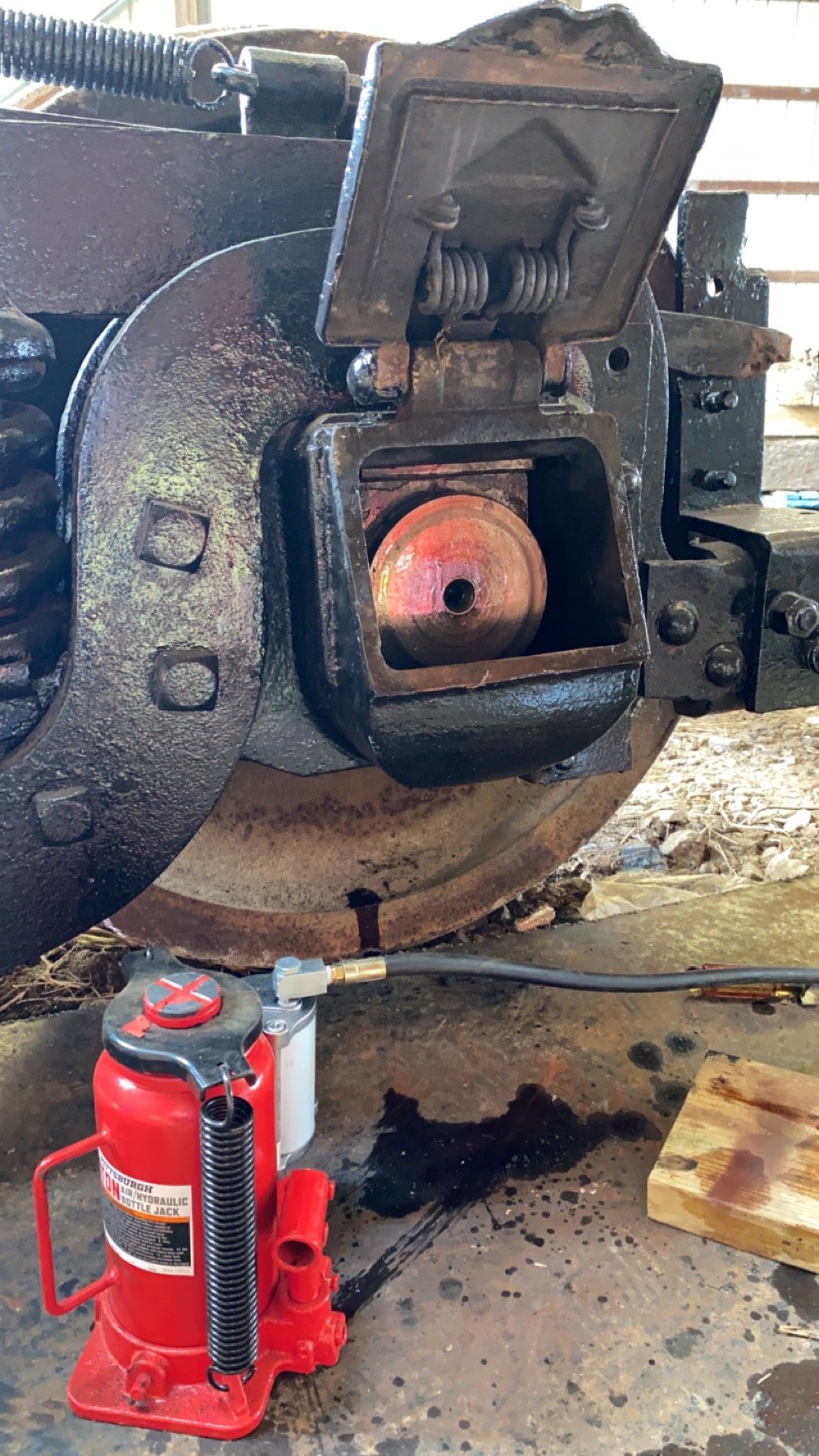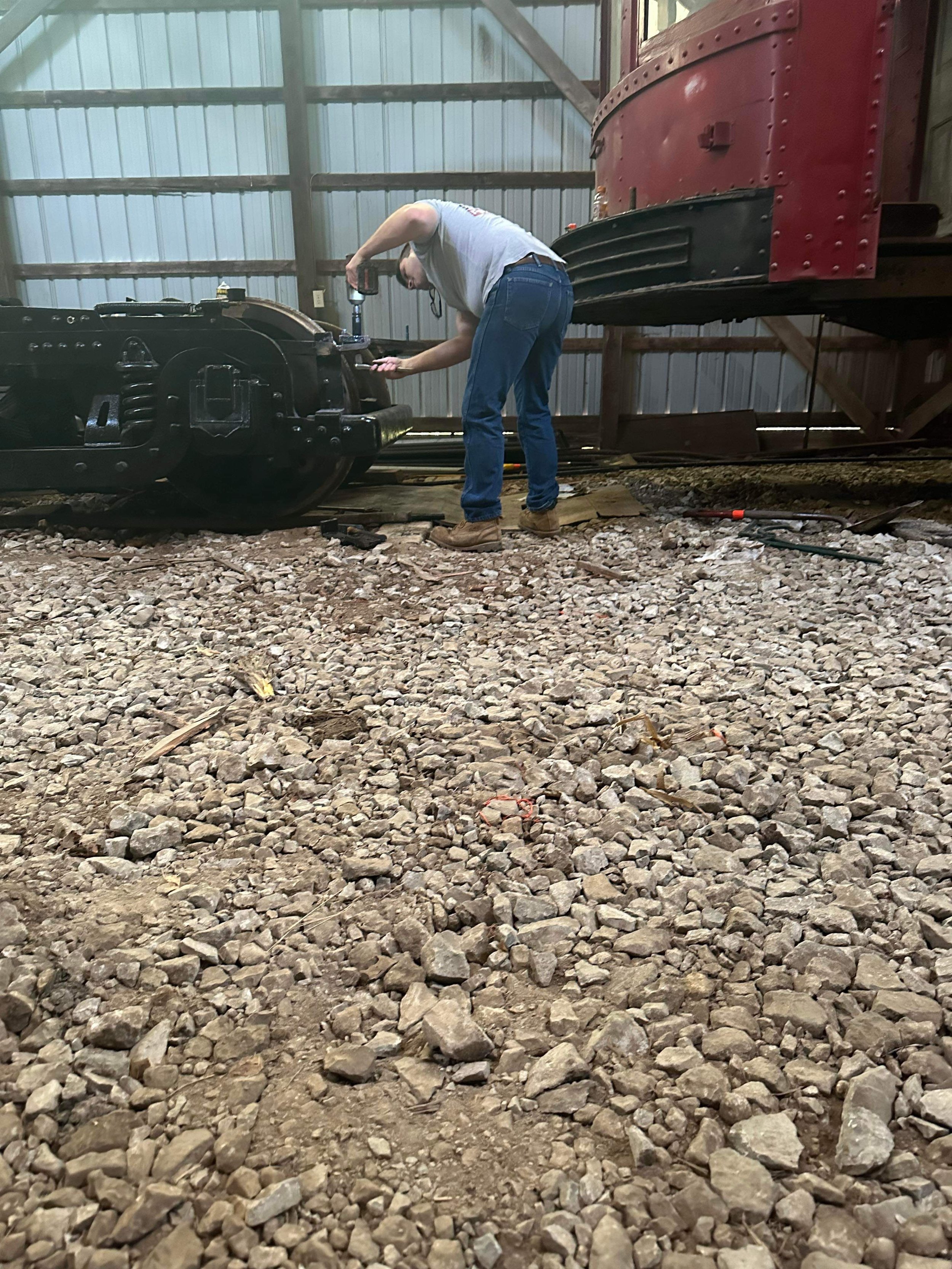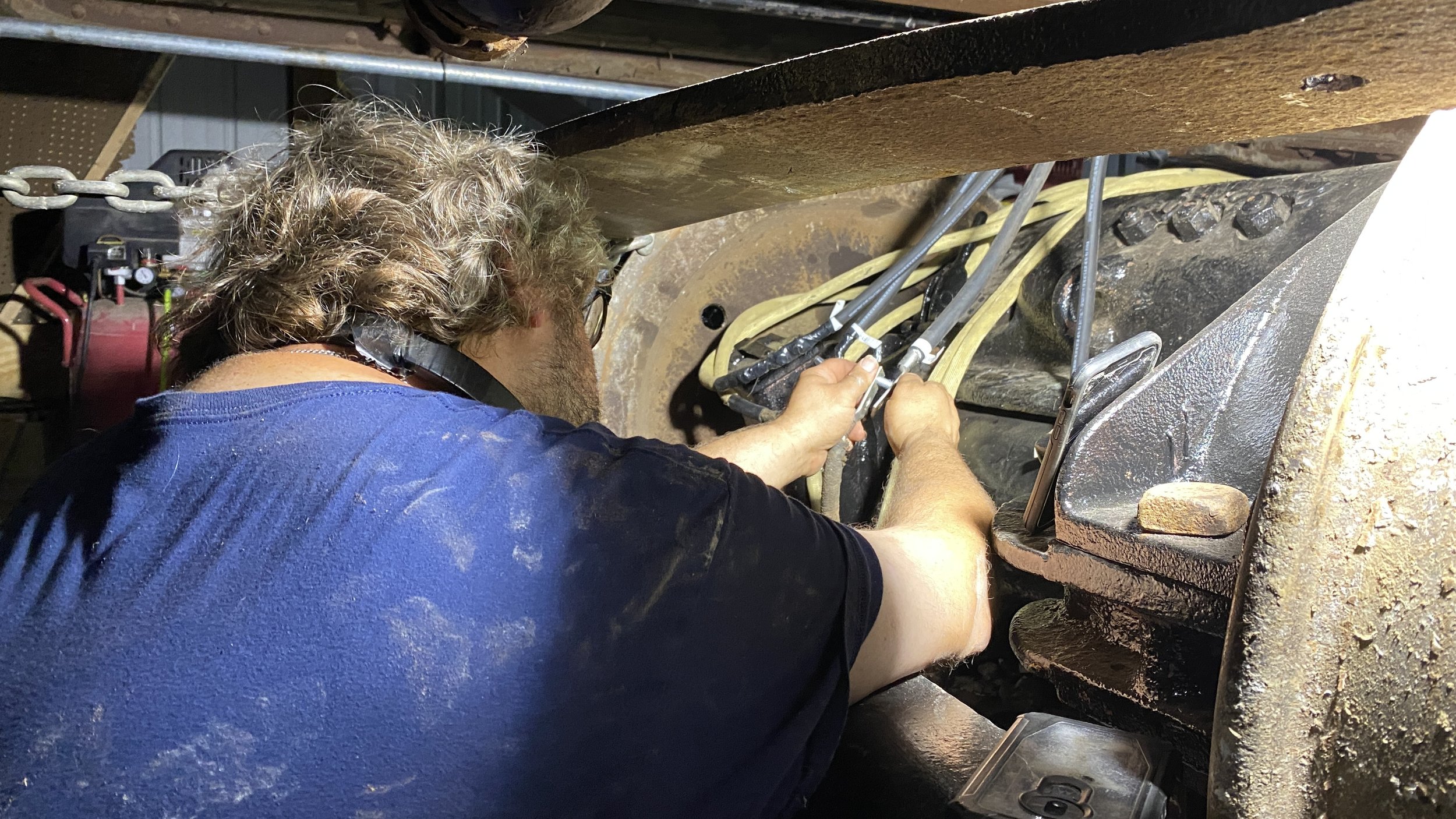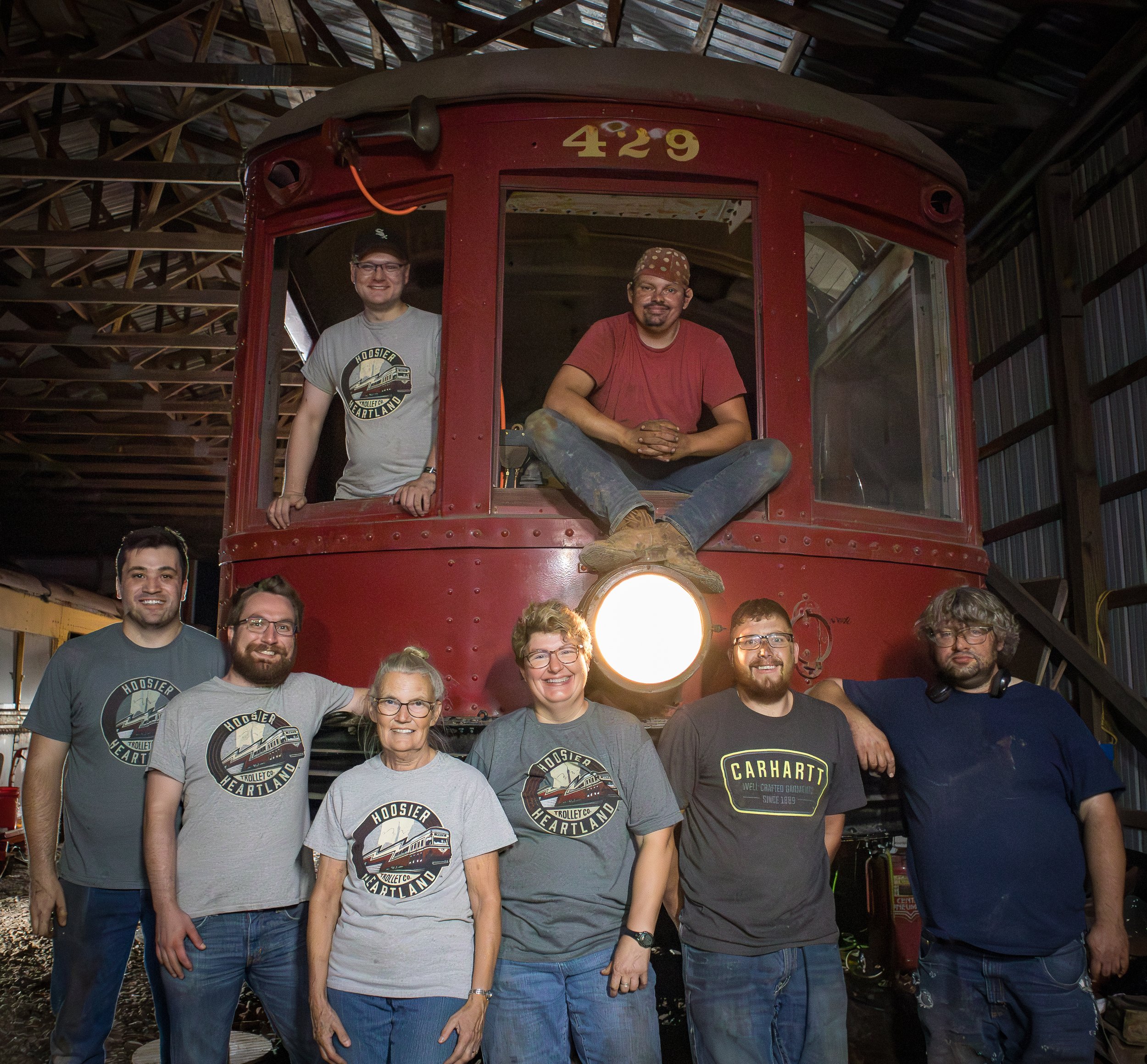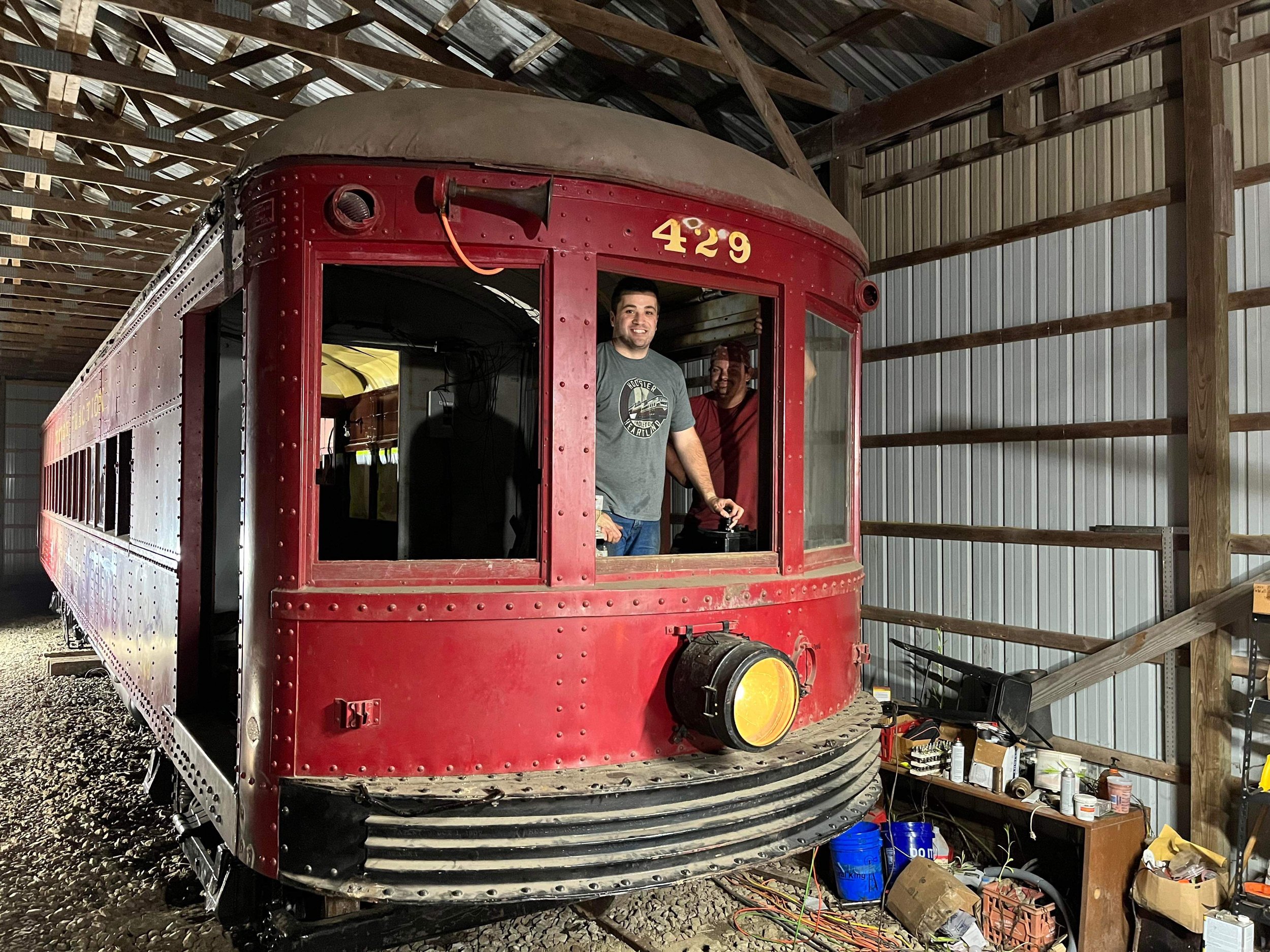A century ago, Indiana's high-speed interurban electric trains empowered Hoosiers to pursue an education, expand economic opportunity, visit loved ones, quickly ship perishable goods - and, electrify rural communities. For the first time since 1940, more than 83 years later, interurban no. 429 lives again as the only original Indiana interurban operational within the state. So, what does it take to bring an antique machine the size of a house back to life? Climb aboard to find out.
Subscribe to our email list at the bottom of this page to be the first to know about future open houses featuring interurban no. 429 moving under its own power.
Union Traction interurban no. 427, then part of the Indiana Railroad, passes through the small town of Amo, Ind. west of Indianapolis in 1938. The car would run for the last time just two years after this photo was taken, while the last interurban, with the exception of the South Shore, would operate in 1941.
A century ago, Indiana's high-speed interurban electric trains empowered Hoosiers to pursue an education, expand economic opportunity, visit loved ones, quickly ship perishable goods - and, electrify rural communities. For the first time since 1940, more than 83 years later, interurban no. 429 lives again as the only original Indiana interurban operational within the state.
Those who last rode and operated the car lived in an era prior to the reign of television, interstate highways, smartphones and the internet. Serving as a gravel pit office for nearly 25 years, stripped of all components, followed by more than 50 years in storage and narrowly escaping the fate of being lost forever, no. 429 again gracing rails within the Hoosier State is cause for celebration.
This accomplishment is thanks in no small part to two Heritage Support Grants provided by the Indiana Historical Society and made possible by Lilly Endowment, Inc., more than 3,500 volunteer hours and nearly $100,000 in total contributions.
We're excited to share a glimpse of everyday life in early Indiana through experiencing one of these machines.
So, what does it take to bring an antique machine the size of a house back to life? Climb aboard to find out.
The Mission to Electrify 429
Union Traction no. 427, the first of 15 in the series of cars of which no. 429 is part, poses at the Indianapolis Traction Terminal in the 1920s when new. Krambles-Peterson Archive.
Electrify 429, a capital campaign for the operational restoration of Union Traction Company of Indiana interurban No. 429 - an intercity electric railway car - was launched in 2019 and aims to complete the historic car by its 100th birthday in 2025. The Heritage Support Grant grant funded the restoration of key mechanical components for propulsion, braking and suspension, culminating in test movements of the car under its own power in August 2023 and placing the Electrify 429 project at 60 percent completion.
Union Traction no. 429 served as a gravel pit and real estate office in Indianapolis for nearly 25 years. Many streetcars and interurbans were stripped of all components for scrap and then sold as-is to be used as homes and offices. Serving as the office for Atkinson & Co. is the only reason no. 429 wasn’t lost forever at the end of the interurban era. Richard Baldwin Photo. John Fuller Collection.
The grant project concluded phase two of a four-phase-restoration plan, which has been underway for four years at a private facility near Indianapolis. Phase Two was the longest, most expensive and most technical phase of the project, as it called for the complete mechanical and electrical overhaul of the car using period equipment and practices. Thanks to a prior grant, HHTC overhauled 1920s-era-car components that were re-configured to match No. 429’s original equipment as closely as possible. These components were completed in 2021 and mounted underneath the car and were necessary to make this most recent project and grant possible.
Disassembly & Inspection
Volunteers worked four to five days per week cleaning, rebuilding, fabricating, wiring and painting components vital to the operation of interurban no. 429.
Disassembly of trucks, which house wheels, motors, and suspension, can be seen. Work was heavy, dirty and required heavy machinery and torches.
Rehabilitating Electric Motors
Each electric motor contains 100 horsepower and is powered by 600 volts of electricity. Originally having four, two motors were completely disassembled, inspected, cleaned, re-insulated and re-installed on the interurban’s wheels. The motors turn gears which propel the train. Work occurred even during the dead of winter.
Structural Work
Structural work took place on the motorman compartment’s floor, which is where baggage is stored and the motorman operates the car. Salt from years of use in Indiana streets created corrosion. New hole patterns were also necessary to install controls. Original techniques, including riveting, were used as part of the fabrication process.
Installing an Air Brake System and Routing Electrical Wiring
An entire brake system and electrical conduit routing system were constructed from scratch. A similar, period brake system was sourced and components were mounted as closely as possible to their original locations. An original interurban brake gauge was even found!
Braking and electrical components required custom-made mounting brackets and installation using period railroad maintenance practices. A special seal for the brake piston that pushes the brakes against the wheels was sourced from the Pacific Southwest Railway Museum in California.
Rebuilding Interurban Trucks
Rebuilding trucks upon which the car rides down the track required full disassembly, repair, re-assembly, and paint, including the swapping of wheels.
These trucks are from the early 1900s and are of a similar type to no. 429’s originals. They came from an electric freight locomotive native to Iowa that no longer exists.
Final Assembly
Tedious, final assembly projects, included the installation of trucks underneath the car, the construction of a panel track on which to operate the car, hooking up cables to motors, and electrical upgrades to power the car.
A Successful First Trip
For the first time since 1940, more than 83 years later, interurban no. 429 lives again as the only original Indiana interurban operational within the state.
Those who last rode and operated the car lived in an era prior to the reign of television, interstate highways, smartphones and the internet.




